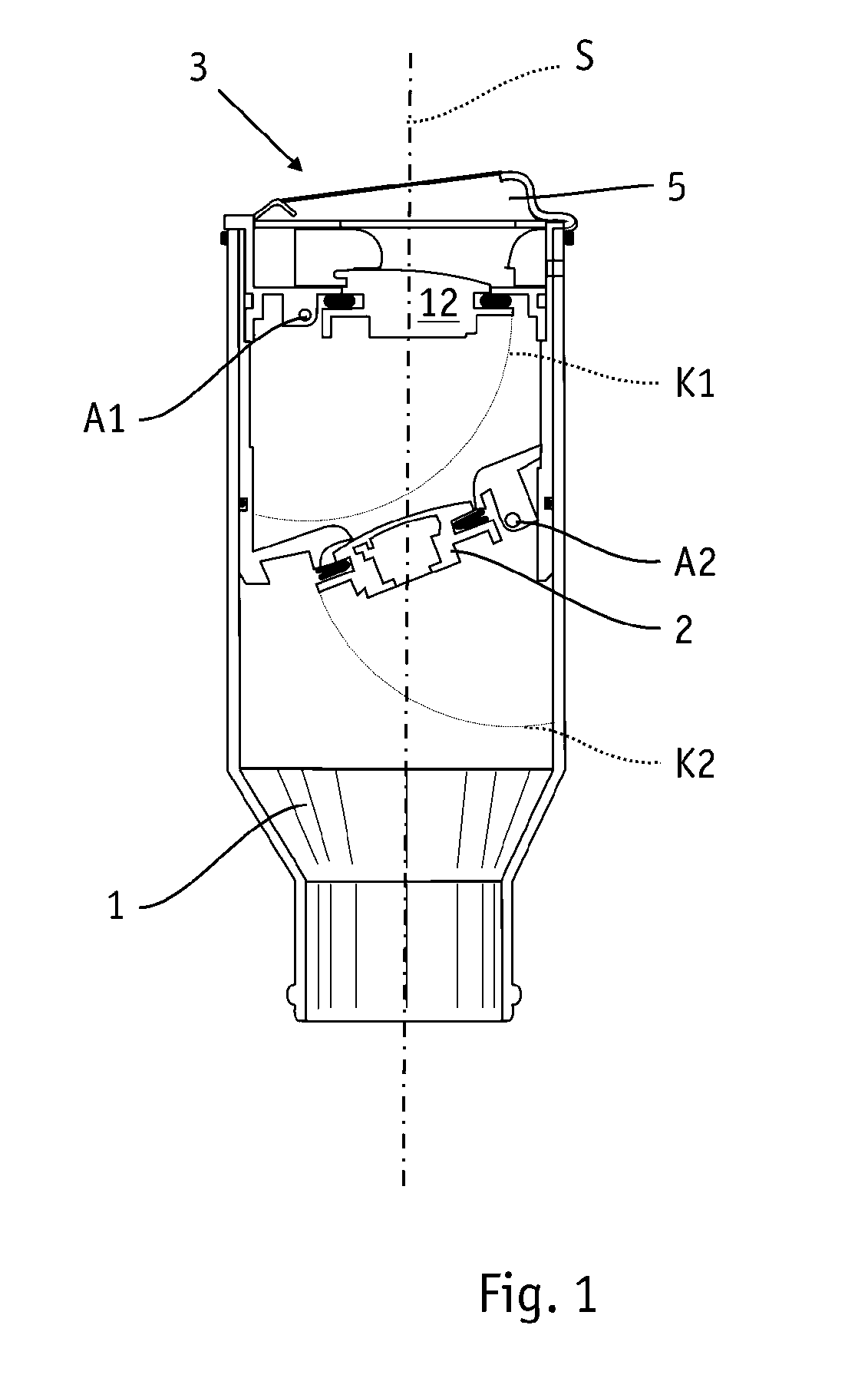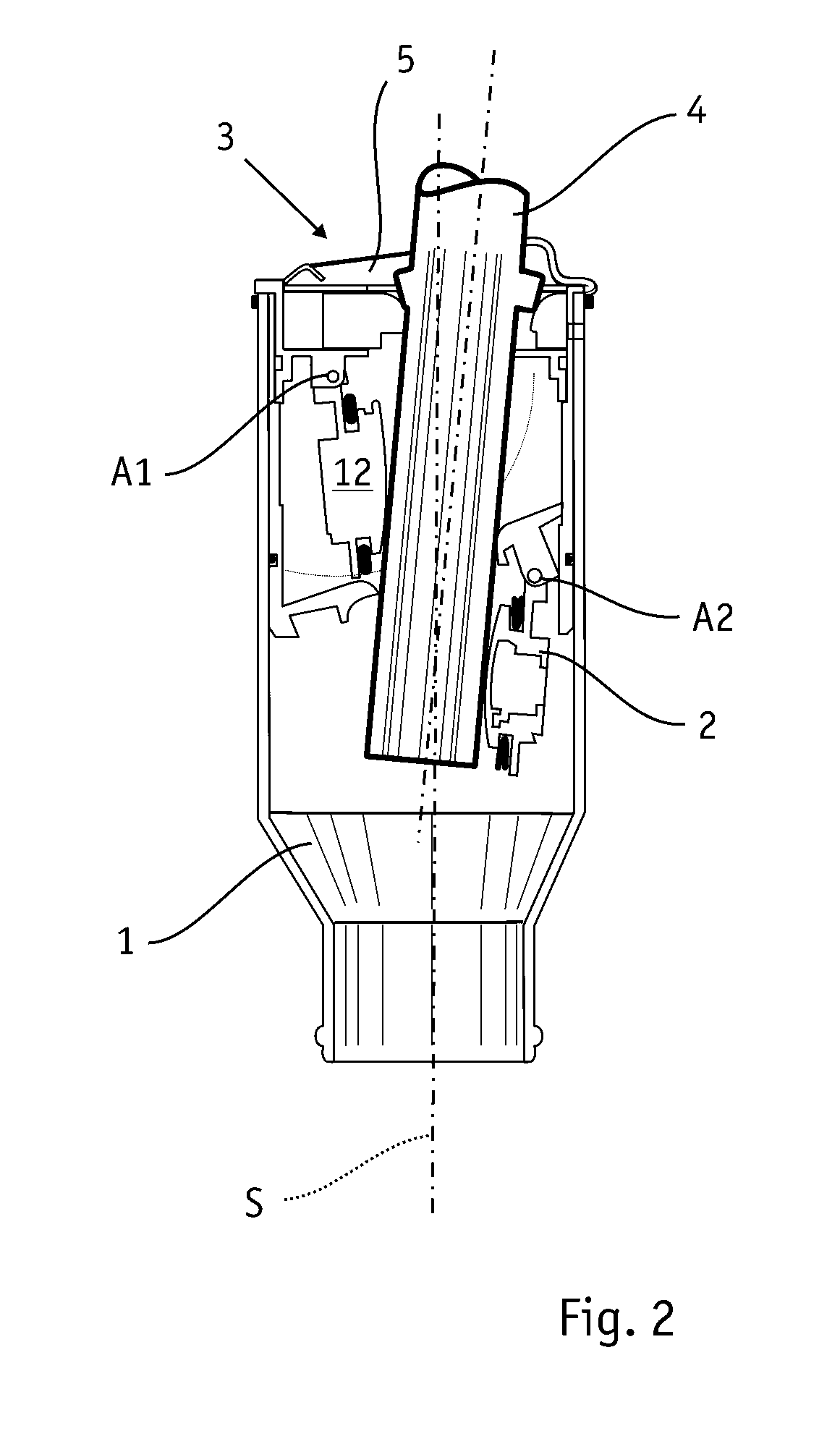Neck end for a filler neck
a technology of filling neck and filling end, which is applied in the direction of closures, lids, packaging, etc., can solve the problems of unsuitable type of fuel flowing severe damage, and inability to introduce the pump nozzle further into the filling end, etc., to achieve the effect of improving protection
- Summary
- Abstract
- Description
- Claims
- Application Information
AI Technical Summary
Benefits of technology
Problems solved by technology
Method used
Image
Examples
Embodiment Construction
[0041]FIGS. 1 and 2 show a neck end according to the invention for the filling neck of a container. Such a container can be the tank of a motor vehicle, as in the exemplary embodiment shown. This container has a double-flap closure which is formed by the upper pivoting flap 12 and the lower sealing flap 2. The neck insert has a widened diameter in the region of the flaps compared to the lower section of the filling neck 1, to be able to receive the closure mechanism and to be able to introduce the filling pipe 4 of a pump nozzle as shown in FIG. 2. The filling neck 1 extends along a straight or curved neck axis S and conducts the introduced fuel into the tank of the motor vehicle.
[0042]As in the exemplary embodiment shown, the neck end can be in two parts, an inner plug-in pipe which bears the closure mechanism being inserted into an outer retaining pipe of the filling neck 1. Seals arranged between the two components ensure that a gastight and fluid-tight connection is realised. Th...
PUM
 Login to View More
Login to View More Abstract
Description
Claims
Application Information
 Login to View More
Login to View More - R&D
- Intellectual Property
- Life Sciences
- Materials
- Tech Scout
- Unparalleled Data Quality
- Higher Quality Content
- 60% Fewer Hallucinations
Browse by: Latest US Patents, China's latest patents, Technical Efficacy Thesaurus, Application Domain, Technology Topic, Popular Technical Reports.
© 2025 PatSnap. All rights reserved.Legal|Privacy policy|Modern Slavery Act Transparency Statement|Sitemap|About US| Contact US: help@patsnap.com



